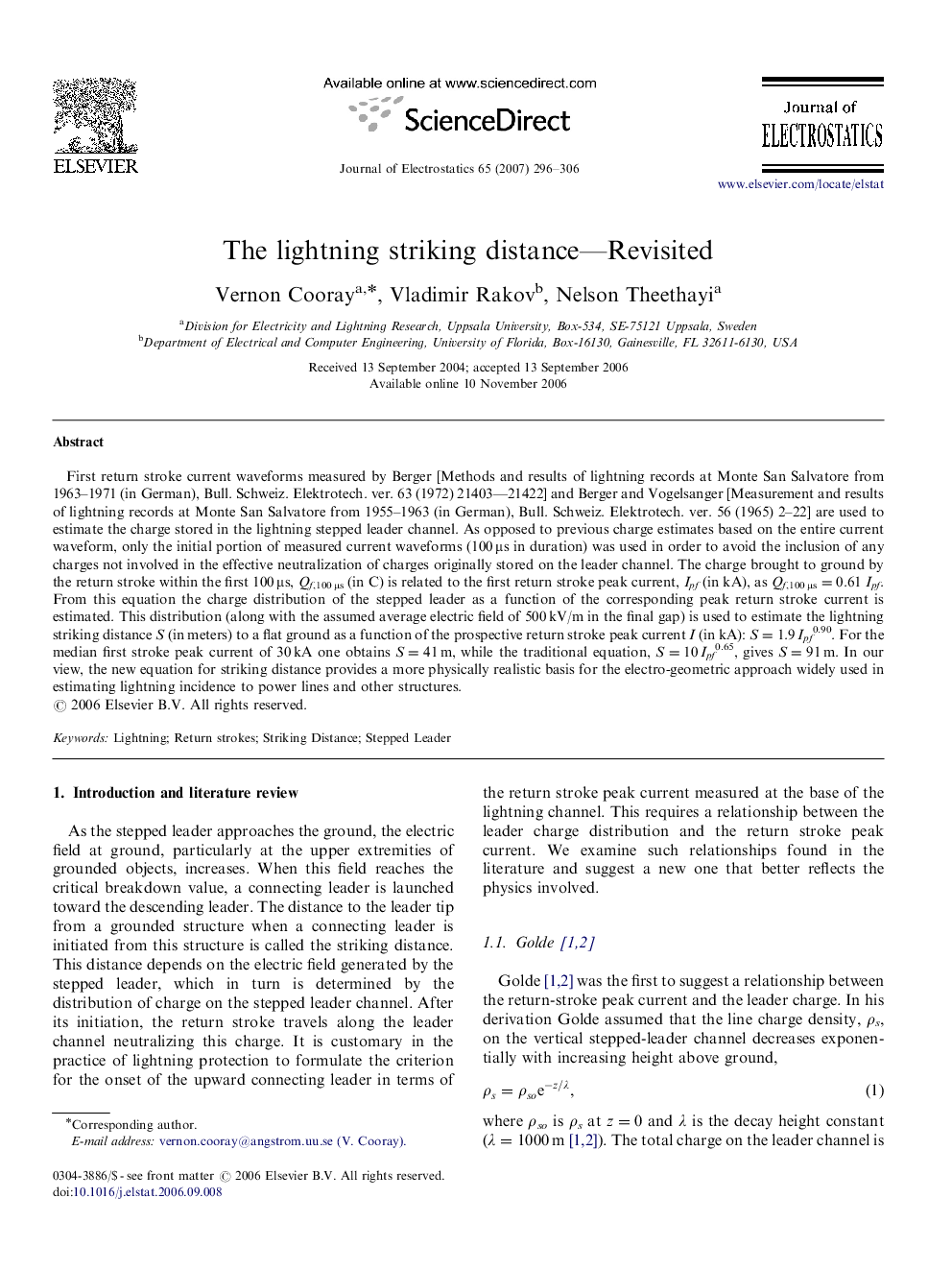| کد مقاله | کد نشریه | سال انتشار | مقاله انگلیسی | نسخه تمام متن |
|---|---|---|---|---|
| 724771 | 1461337 | 2007 | 11 صفحه PDF | دانلود رایگان |

First return stroke current waveforms measured by Berger [Methods and results of lightning records at Monte San Salvatore from 1963–1971 (in German), Bull. Schweiz. Elektrotech. ver. 63 (1972) 21403—21422] and Berger and Vogelsanger [Measurement and results of lightning records at Monte San Salvatore from 1955–1963 (in German), Bull. Schweiz. Elektrotech. ver. 56 (1965) 2–22] are used to estimate the charge stored in the lightning stepped leader channel. As opposed to previous charge estimates based on the entire current waveform, only the initial portion of measured current waveforms (100 μs in duration) was used in order to avoid the inclusion of any charges not involved in the effective neutralization of charges originally stored on the leader channel. The charge brought to ground by the return stroke within the first 100 μs, Qf,100 μs (in C) is related to the first return stroke peak current, Ipf (in kA), as Qf,100 μs=0.61 Ipf. From this equation the charge distribution of the stepped leader as a function of the corresponding peak return stroke current is estimated. This distribution (along with the assumed average electric field of 500 kV/m in the final gap) is used to estimate the lightning striking distance S (in meters) to a flat ground as a function of the prospective return stroke peak current I (in kA): S=1.9 Ipf0.90. For the median first stroke peak current of 30 kA one obtains S=41 m, while the traditional equation, S=10 Ipf0.65, gives S=91 m. In our view, the new equation for striking distance provides a more physically realistic basis for the electro-geometric approach widely used in estimating lightning incidence to power lines and other structures.
Journal: Journal of Electrostatics - Volume 65, Issues 5–6, May 2007, Pages 296–306